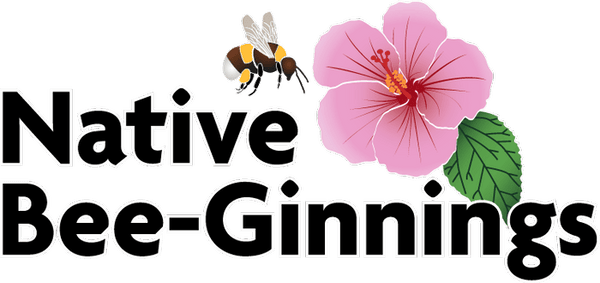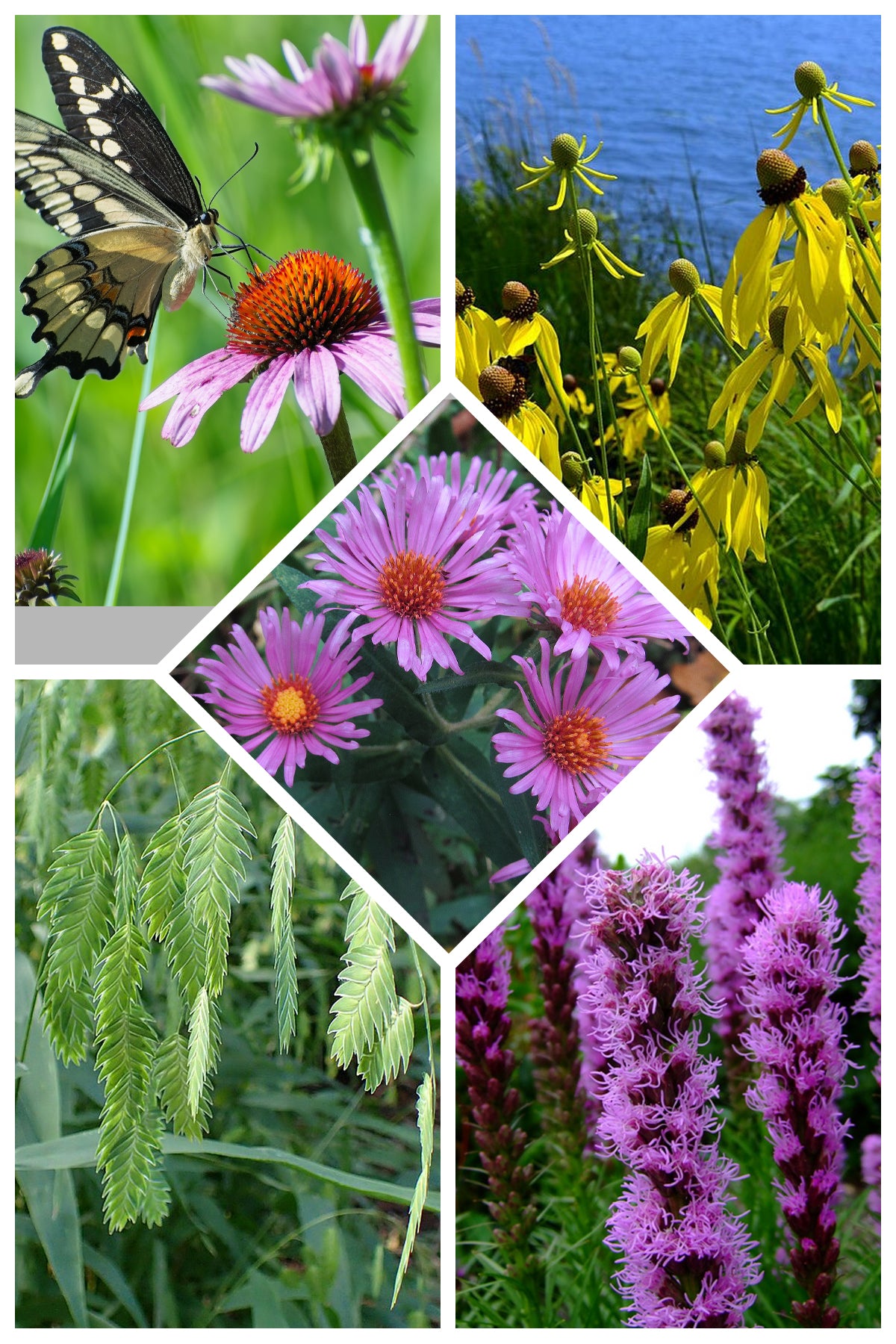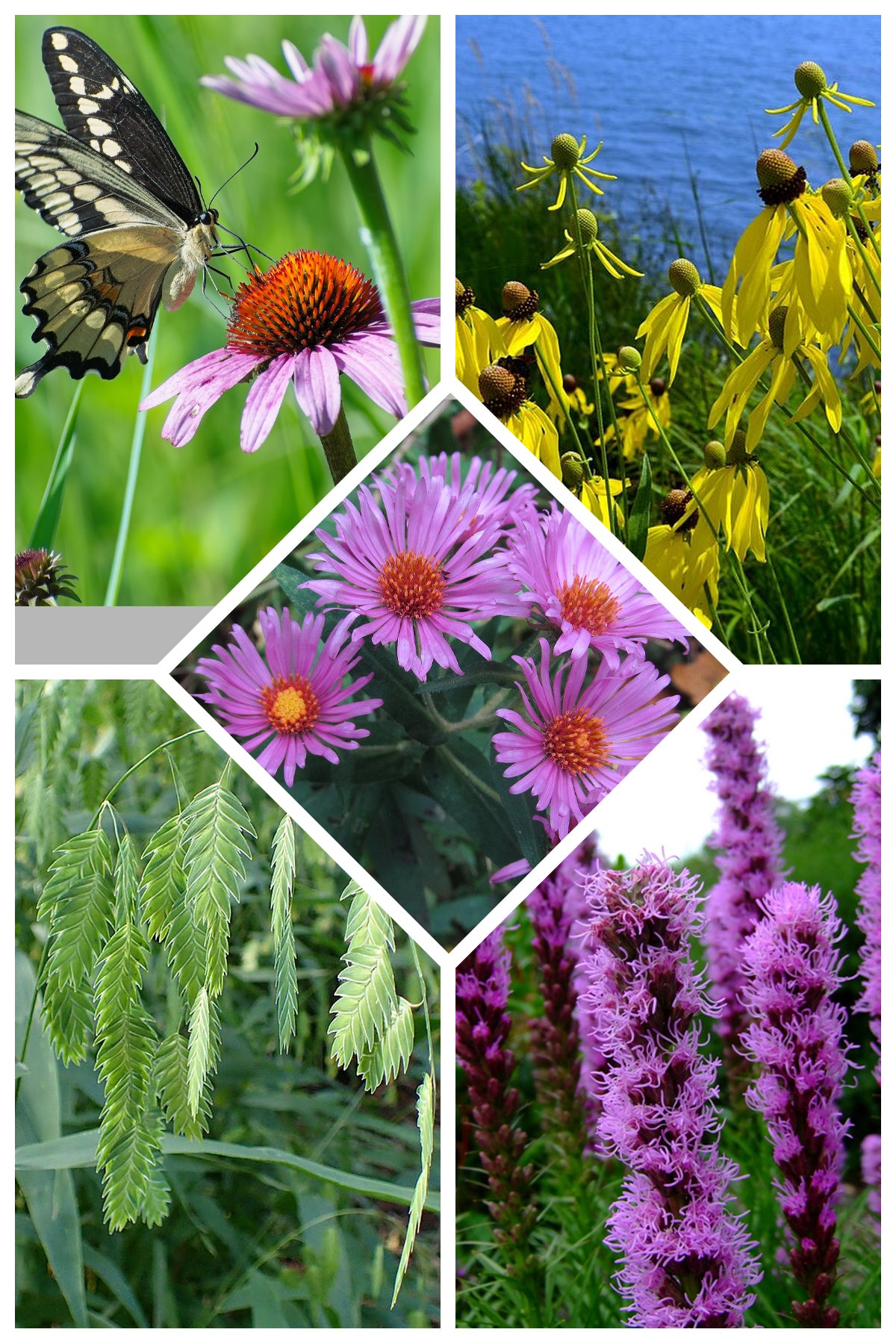About This Mix
Prairie Glow Long-Bloom Native Mix
If your planting site has moderate, well-drained moisture, not swampy, not bone-dry, Prairie Glow is the mix that thrives. This carefully balanced blend combines warm-season grasses, cheerful wildflowers, and late-season asters to keep the show going from spring through frost. Designed for full sun to light shade where soils stay evenly moist but not saturated, it creates resilient meadows, borders, and pollinator pathways with long-lasting color and texture. Expect early gold from Golden Alexanders and Coreopsis, summer fireworks from Purple Coneflower and Wild Bergamot, and autumn drama from Little Bluestem, Indian Grass, and glowing asters.
Meet the Stars of Prairie Glow
- Schizachyrium scoparium (Little Bluestem) – Blue-green in summer and glowing red in fall, your meadow’s daily sunset.
- Echinacea purpurea (Purple Coneflower) – Butterfly magnet by day, goldfinch snack bar by fall.
- Elymus canadensis (Canada Wild Rye) – Graceful, arching seed heads that sway like prairie wind chimes.
- Coreopsis lanceolata (Lance-leaf Coreopsis) – Cheerful gold coins scattered across early summer.
- Chasmanthium latifolium (River Oats) – Dangling seed ornaments that shimmer and feed birds.
- Heliopsis helianthoides (Early Sunflower) – A long-blooming smile that anchors summer color.
- Zizia aurea (Golden Alexanders) – Fine golden lace for spring pollinators.
- Liatris spicata (Dense Blazing Star) – Purple wands that light from the top down, pollinator VIPs.
- Penstemon digitalis (Foxglove Beardtongue) – Elegant white trumpets, hummingbird pit stops.
- Ratibida pinnata (Yellow Coneflower) – Nodding yellow petals around a tall, dapper cone.
- Rudbeckia hirta (Black-eyed Susan) – Sunny and familiar, everyone’s first wildflower friend.
- Tradescantia ohiensis (Ohio Spiderwort) – Morning blues that melt by noon, then return tomorrow.
- Symphyotrichum novae-angliae (New England Aster) – Purple finale for monarchs and late bees.
- Rudbeckia triloba (Brown-eyed Susan) – A cloud of smaller daisies that keeps the show going.
- Carex vulpinoidea (Brown Fox Sedge) – Soft green cushions that frame the floral stars.
- Sorghastrum nutans (Indian Grass) – Golden plumes glowing in the autumn light.
- Aquilegia canadensis (Columbine) – Red-and-yellow bells, spring’s hummingbird welcome mat.
- Monarda fistulosa (Wild Bergamot) – Lavender mop-tops with a tea-time aroma.
- Pycnanthemum incanum (Hoary Mountain Mint) – Silver-tinted leaves buzzing with pollinators.
- Asclepias tuberosa (Butterfly Weed) – A blaze of orange and a monarch lifeline.
- Symphyotrichum laeve (Smooth Blue Aster) – Cool blue notes to close the season.
- Pycnanthemum virginianum (Mountain Mint) – Minty freshness that draws every bee in the neighborhood.
- Oligoneuron rigidum (Stiff Goldenrod) – Upright stems crowned with golden confetti.
- Scirpus atrovirens (Dark-green Bulrush) – Graceful structure where soils stay moist.
Together, this mix layers shifting hues and textures from spring’s first gold to autumn’s blazing grasses and asters, a glowing tapestry that lights up your landscape while feeding pollinators and songbirds all season long.


